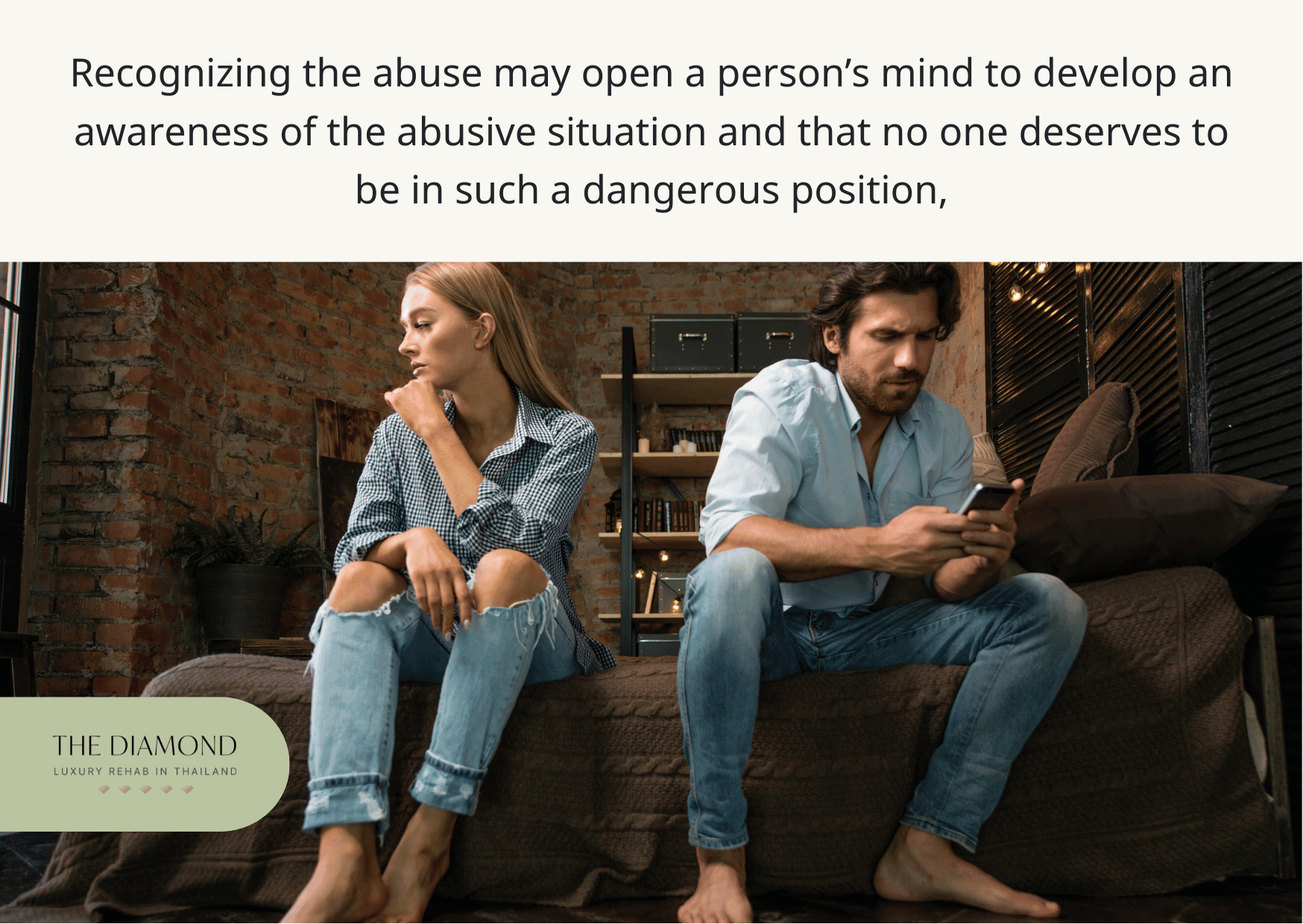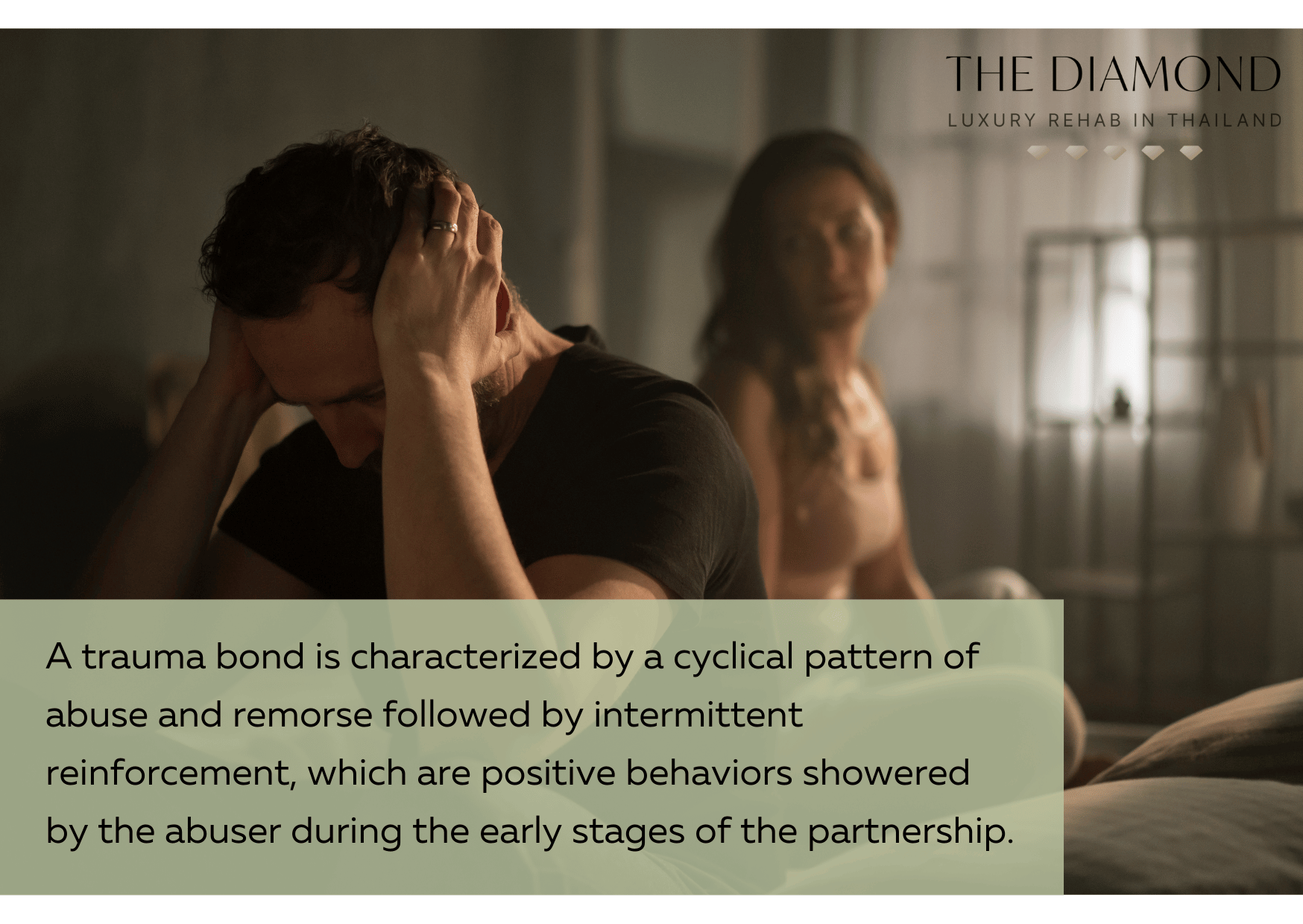7 Stages of trauma bonding
Table of content

Trauma bonding refers to a psychological response to abuse. It is a harmful coping mechanism caused by danger, shame, or exploitation that manifests as an unhealthy attachment to the abuser, as explained by Patrick J. Carnes, Ph.D., founder of the International Institute for Trauma and Addiction Professionals (IITAP). The thought of a person developing an attachment to their abuser is often challenging to grasp. This comes with little surprise because even people in such situations do not readily realize that they have been trapped in the vicious cycle of abusive relationships.
Breaking a trauma bond starts with identifying the 7 stages of trauma bonding, which encompasses gaslighting, love bombing, emotional addiction, criticism, loss of self, trust and dependency, and resigning to control. It is important to understand how these stages develop in a toxic and abusive relationship. Acknowledging that such a bond exists and recognizing even the most subtle signs of abuse helps a victim overcome emotional attachment.
What is a trauma bond?
A trauma bond is an emotional bond that an abused person has with their abuser. These destructive attachments can develop after a stressful event in the relationship, or even at any stage of dating. Abusers may react aggressively towards their intimate partners to assert dominance and maintain control over the relationship, as reported by Zlatka Rakovec-Felser of the Department for Health Psychology, Faculty of Medicine, University of Maribor.
Trauma bonding is characterized by a pattern of abuse followed by remorseful behavior in the form of guilt. Feeling guilty and showing empathy promotes forgiveness and making amends by taking responsibility for the abuser’s behavior, according to James Edem Effiong et al. in their 2022 research article published in the Journal of Social and Personal Relationships.
The 7 stages of trauma bonding involve a repeated cycle of abuse and alternating kindness. Afflicted people may realize that the relationship has caused negative changes in their life, yet find it extremely hard to sever the connection between them and their abuser.

What are the stages of trauma bonding?
The stages of trauma bonding include gaslighting, love bombing, emotional addiction, criticism, loss of self, and trust and dependency. Understanding the phases is necessary for victims to realize their situation and learn how to break trauma bonds. The stages of trauma bonding are listed below.
1. Gaslighting
Gaslighting is an emotional abuse in which the abuser makes the abused question their reality, beliefs, and sanity. This technique of psychological manipulation typically occurs in abusive relationships. According to a 2021 article by A. Rudenok et al. published in the Scientific Herald of Sivershchynam, victims are manipulated to overlook the harmful behavior of the abusive partner. Victims of gaslighting second-guess themselves which is caused by consistently receiving false information, making it harder to break trauma bonds.
2. Love bombing
Love bombing refers to behavior patterns in which someone overwhelms another person with displays of affection and admiration. It uses loving words, flattery, and excessive attention as tactics to manipulate the recipient into making them feel dependent and indebted to their abuser. Additionally, it causes victims to disregard the perpetrators’ abusive behaviors and induce confusion regarding the nature of the relationship, as reported by Willis Klein et al. in their study entitled “A Qualitative Analysis of Gaslighting in Romantic Relationships”.
3. Emotional addiction
Emotional addiction means that the highs and lows of the relationship become addictive to an individual. Their body constantly produces cortisol (stress) and craves dopamine (pleasure). This results in a cycle of dependency that closely resembles drug addiction. The abused person may know that they are in an unhealthy relationship yet feel like they cannot leave it.
4. Criticism
Criticism is a stage where the abusive partner criticizes and blames the other person for things they fully know are not the latter’s fault, which can lead to emotional abuse. The showering of over-the-top attention and affection previously displayed is slowly replaced with criticism. According to the World Health Organization, this emotional abuse includes “insults, belittling, constant humiliation, and intimidation”. This leaves the victim confused about how all the blame, lying, and denial was shifted onto them.
5. Loss of Self
Loss of self happens when an individual settles for anything just to keep the peace at the expense of their self-confidence and sense of self. When one tries to push back against the destructive behaviors of their abuser, the situation gets worse. In their 2019 paper published in the Journal of Medical Internet Research, Christopher Michael Homan et al. report that victims often stay in abusive relationships out of fear of physical or financial harm if they choose to leave and that acceptance of abuse is a solution to solving issues that cause them.
6. Trust and dependency
This stage involves winning over an abusee’s trust to try and manipulate them into being dependent on their abuser for validation and attention. This dependency bond develops as a result of the prior displays of love and affection that only serve to reinforce the power that the perpetrator has over the victim.
7. Resigning to control
Resigning to control transpires when an open discussion does not work anymore and only ends with the abuser creating a litany of complaints meant to shift blame onto the victim. This gets frustrating and exhausting over time, so victims compromise to resolve conflict by giving in to their abusers. In their 2020 paper published in the Social Sciences journal of MPDI, psychologists Ana Isabel Sani and Dora Pereira state that victims may deter from leaving an abusive relationship because they believe that a partner’s abusive behavior is temporary and that it is possible to restore peace in the relationship. In this situation, the victim may convince themselves into thinking that their partner will change.
How to break a trauma bond?

Breaking a trauma bond starts with acknowledging that such a bond exists, living in reality, and then making a firm decision to leave. The first step to emerging from any unhealthy relationship, whether with a person or with addictive substances, is being honest with oneself and acknowledging the seriousness of the situation.
Acknowledging that you are being subject to poor treatment and manipulation can help you get your start in breaking a trauma bond. Recognizing the abuse may open a person’s mind to develop an awareness of the abusive situation and that no one deserves to be in such a dangerous position, according to Christopher Michael Homan et al. in their 2019 paper published in the Journal of Medical Internet Research.
The next step is to live in reality and refrain from fantasizing that the situation could still be how it was during the good, old times. Living in the moment involves reminding oneself to pay attention to what one feels at the moment as well as how their emotions are affecting the present, and not holding on to what could happen the next day. As the Neuroscience Institute suggests, allow yourself to feel your emotions; these are temporary and will eventually fade away. Returning to an abusive relationship is not an option, as it only perpetuates the cycle of mistreatment and abuse.
Lastly, exit the relationship and cut all ties with the abuser. Although leaving an abusive relationship is never as easy as “just leaving,” getting out of the circumstance is a necessary step to regaining a sense of self, developing self-care practices, and seeking help from a mental health professional who can offer guidance and support during recovery.
Trauma-informed therapies and support groups may be effective in addressing trauma bonding. Trauma-informed care is an intervention that focuses on how traumatic experiences impact an individual’s life. Behavioral approaches that may be used as strategies in trauma-focused therapy include cognitive behavioral therapy (CBT), prolonged exposure therapy (PE), and eye movement desensitization and reprocessing (EMDR).
While there are no specific support groups intended for trauma bonding, there are various groups designed to support toxic relationship survivors, such as Codependents Anonymous (CoDA).

How long does it take to break the trauma bond?
The length of time it takes to break the trauma bond may vary from person to person and may take some time, especially without professional help. This is mainly due to its addictive nature and the fact that it leaves an individual with deep psychological trauma.
Therefore, professional support from mental health experts and building a support network are necessary for putting an end to an abusive relationship. With the help of a therapist, one can learn the patterns of abuse that set the stage for trauma bonding, and they can have more clarity about their situation.
Therapy can also teach an afflicted person how to build new, healthy relationships and ways to maintain better boundaries. On the other hand, support groups provide a safe place for people to ease their emotional burdens and offer social support that is necessary for complete healing.
Can a trauma bond become healthy?

No, a trauma bond cannot become healthy. A trauma bond is characterized by a cyclical pattern of abuse and remorse followed by intermittent reinforcement, which are positive behaviors showered by the abuser during the early stages of the partnership.
As the abuse starts, however, these reinforcing behaviors gradually decrease, leaving the victim in a continuous cycle of seeking their abuser’s approval in hopes of getting the good treatment again. Intermittent reinforcement is also a key contributing factor as to why no matter how often a person asks themselves how to stop trauma bonding, they feel as if they are unable to leave the toxic relationship.
This occasional display of positive behavior is used by the abuser to strengthen the trauma bond, causing the victim to settle for the bare minimum and trapping them in the vicious cycle of narcissistic abuse.
